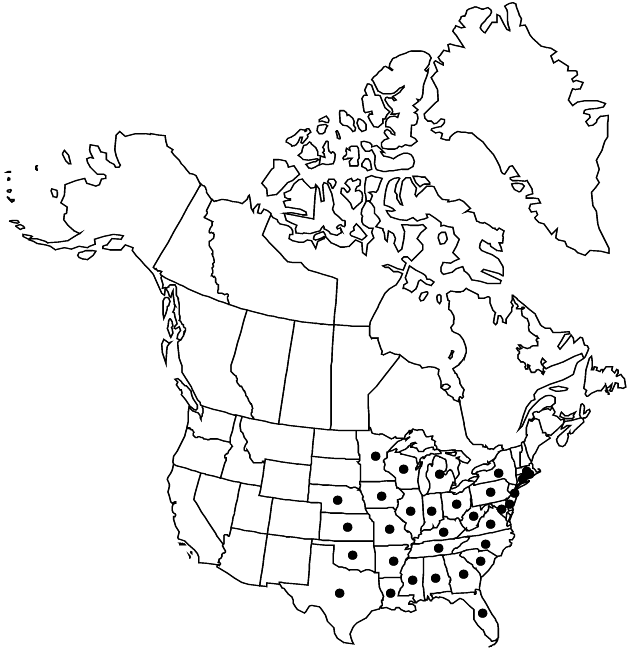Eupatorium serotinum
Fl. Bor.-Amer. 2: 100. 1803.
Perennials, 50–150+ cm. Stems (from short caudices) single, sparsely to densely branched distally, pubescent throughout (sometimes reddish to purplish). Leaves opposite; petiolate (petioles 10–25 mm); blades ± 3-nerved, lanceolate, 20–90+ × 5–40 mm, bases rounded to slightly oblique, margins entire or serrate, apices acute, faces puberulent, glanddotted. Heads in corymbiform arrays. Phyllaries 8–12 in 1–2 series, elliptic to oblong, 1–3 × 0.5–1 mm, apices slightly rounded to acute, abaxial faces puberulent, glanddotted. Florets 9–15; corollas 2.5–3 mm. Cypselae 1–1.5 mm; pappi of 20–30 bristles 2–2.5 mm. 2n = 20.
Phenology: Flowering Aug–Oct.
Habitat: Moist or dry, open sites, roadsides
Elevation: 10–400+ m
Distribution

Ala., Ark., Conn., Del., Fla., Ga., Ill., Ind., Iowa, Kans., Ky., La., Md., Mass., Mich., Minn., Miss., Mo., Nebr., N.J., N.Y., N.C., Ohio, Okla., Pa., R.I., S.C., Tenn., Tex., Va., W.Va., Wis.
Discussion
Eupatorium serotinum has a wide distribution and is often abundant where it occurs. It includes only sexual, diploid populations. It is known to hybridize with E. perfoliatum. An introduction of E. serotinum in southeastern Ontario apparently is local and may not have persisted.
Selected References
None.
Lower Taxa
"fine" is not a number.
